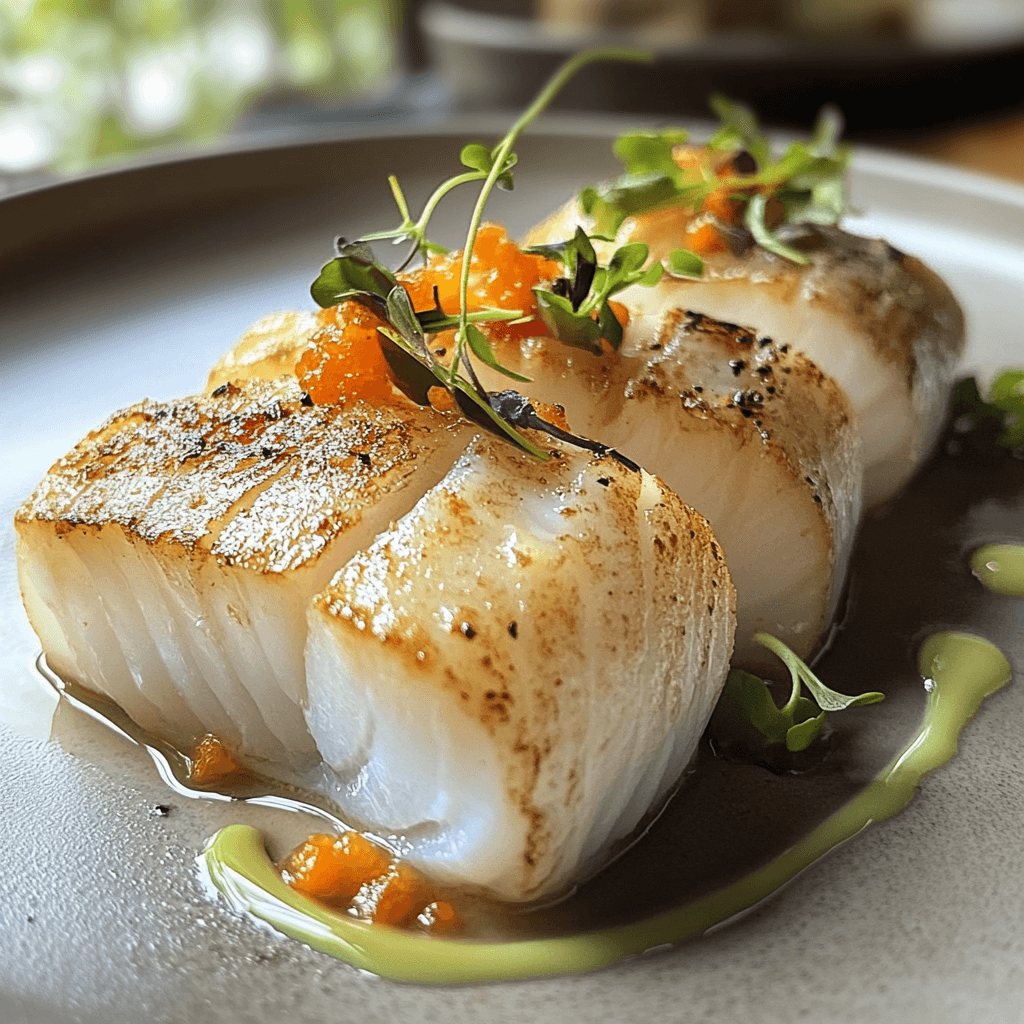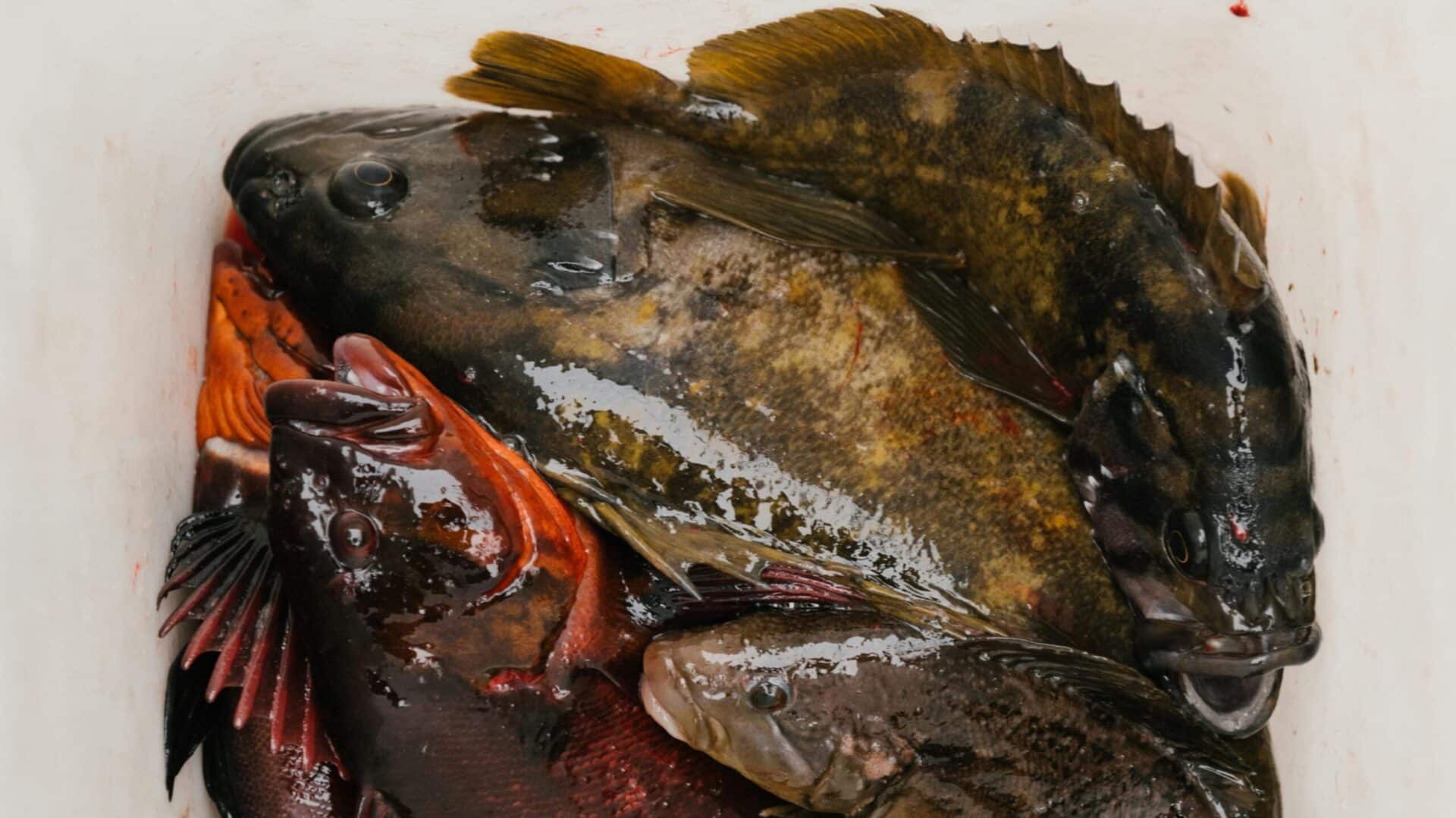1. Introduction to Baked Rockfish
Baked rockfish is a culinary delight that combines the tender, flaky texture of rockfish with the wholesome cooking method of baking. Known for its mild flavor and versatility, rockfish is a favorite among seafood lovers who value both taste and nutrition. Whether you’re a beginner in the kitchen or a seasoned chef, baking rockfish is an accessible way to create a meal that’s not only delicious but also healthy. This cooking technique helps retain the fish’s natural moisture, making it a standout choice for those seeking a fuss-free yet flavorful dish.
In this article, we’ll explore everything you need to know about baked rockfish, from selecting the freshest fish to mastering classic recipes. You’ll also discover pro tips, variations, and answers to common questions, ensuring your experience with this Chesapeake Bay treasure is nothing short of extraordinary.
2. Understanding Rockfish
Rockfish, a versatile and nutrient-rich fish, is a favorite among seafood enthusiasts for its mild flavor and firm texture. Native to the waters of the Chesapeake Bay and the Pacific Coast, this species includes several varieties, such as black rockfish, red rockfish, and striped bass. Each type offers subtle differences in flavor and appearance, making it a unique choice for diverse culinary applications.
2.1. What is Rockfish?
- Rockfish is a lean, low-fat fish that is ideal for baking due to its ability to retain moisture and flavor.
- It is available in both whole fish and fillet forms, making it suitable for a range of recipes.
- Popular in North America, especially along coastal regions, rockfish is known for its adaptability to various cooking methods, including grilling, frying, and, of course, baking.

2.2. Nutritional Benefits
Including rockfish in your diet provides a host of health advantages:
- High in protein: Rockfish offers a substantial protein boost, making it a great option for those looking to build or maintain muscle.
- Rich in omega-3 fatty acids: These essential fats support heart health and improve brain function.
- Low in calories: Ideal for those aiming to maintain a balanced diet without sacrificing flavor.
- Packed with vitamins and minerals: Rockfish is an excellent source of vitamin D, selenium, and potassium, all of which contribute to overall wellness.
This combination of flavor, versatility, and health benefits cements rockfish as a must-have ingredient in any seafood lover’s kitchen.
3. Selecting the Perfect Rockfish
Choosing the right rockfish is essential to ensure a delicious and successful baking experience. Whether you prefer fresh or frozen fish, knowing how to select the best quality makes all the difference in both flavor and texture.
3.1. Fresh vs. Frozen Rockfish
- Fresh rockfish: Offers the best flavor and texture. Look for fish that is sourced locally and in season for optimal freshness.
- Frozen rockfish: A convenient and long-lasting option. Modern freezing techniques often lock in the fish’s natural flavors, making it a reliable choice when fresh options are unavailable.
3.2. Signs of Freshness
When shopping for fresh rockfish, pay attention to these key indicators of quality:
- Clear eyes: The eyes of a fresh fish should be bright and not cloudy.
- Firm flesh: Gently press the fish with your finger; the flesh should bounce back and feel firm.
- Mild aroma: Fresh rockfish should have a clean, briny smell—not a strong “fishy” odor.
- Bright skin and gills: Look for shiny, moist skin and vibrant red gills, which signal freshness.
Pro Tip:
If buying frozen rockfish, ensure the packaging is airtight and free from frost or ice crystals, as these may indicate freezer burn. Always thaw frozen fish in the refrigerator overnight for even defrosting and better texture.
By selecting high-quality rockfish, you set the stage for a flavorful and satisfying baked dish that captures the essence of the sea.
4. Preparing Rockfish for Baking
Proper preparation is the foundation of a perfectly baked rockfish. Whether you’re working with a whole fish or fillets, a few key steps ensure that your dish turns out flavorful and cooked to perfection.
4.1. Cleaning and Filleting
If you’re starting with a whole rockfish, here’s a step-by-step guide to prepare it for baking:
- Step 1: Rinse the fish thoroughly under cold water to remove any surface residue or scales.
- Step 2: Use a fish scaler or the back of a knife to gently scrape off the scales, working from the tail toward the head.
- Step 3: Remove the guts by making a small incision along the belly and carefully scooping them out. Rinse the cavity thoroughly.
- Step 4: If desired, fillet the fish by cutting along the backbone and ribs, separating the flesh from the bone.
For fillets purchased at a market, ensure they are deboned and rinsed under cold water before use.
4.2. Marinating Techniques
Marinating enhances the flavor and ensures the fish remains moist during baking. Here are some popular marinade ideas for rockfish:
- Citrus Herb Marinade: Combine lemon or lime juice, olive oil, garlic, and fresh herbs like parsley and dill. Let the fish marinate for 15–30 minutes.
- Asian-Inspired Marinade: Mix soy sauce, ginger, sesame oil, and a touch of honey for a savory-sweet flavor profile.
- Spicy Cajun Marinade: Blend Cajun seasoning, smoked paprika, and a splash of vinegar for a bold and zesty kick.
Pro Tip:
Avoid marinating for too long, especially with acidic ingredients like lemon, as they can “cook” the fish and alter its texture.
With a clean, well-prepared rockfish and a flavorful marinade, you’re ready to move on to creating a classic baked masterpiece.

5. Classic Baked Rockfish Recipe
A classic baked rockfish recipe is simple yet incredibly flavorful, making it a favorite for seafood enthusiasts. This recipe focuses on enhancing the natural taste of the rockfish while keeping the preparation straightforward and beginner-friendly.
5.1. Ingredients List
To make a delicious baked rockfish, you’ll need:
- 1 whole rockfish (about 2–3 pounds) or 2 large fillets
- 3 tablespoons olive oil
- Juice of 1 lemon
- 2 cloves garlic, minced
- 1 teaspoon Old Bay seasoning
- 1 teaspoon dried thyme or fresh thyme sprigs
- Salt and black pepper, to taste
- Fresh parsley, chopped (for garnish)
- Optional: Sliced vegetables like zucchini, cherry tomatoes, or bell peppers to bake alongside the fish.
5.2. Step-by-Step Instructions
- Preheat the oven: Set the oven to 375°F (190°C).
- Prepare the baking dish: Lightly grease a baking dish with olive oil. Arrange sliced vegetables, if using, as a base for the fish.
- Season the fish: Pat the rockfish dry with a paper towel. Rub the olive oil evenly over the fish, inside and out (if using a whole fish). Sprinkle with salt, pepper, and Old Bay seasoning.
- Add flavor elements: Place lemon slices, thyme sprigs, and minced garlic inside the fish cavity or on top of the fillets.
- Bake the rockfish: Transfer the prepared fish to the baking dish. Cover loosely with aluminum foil to prevent drying. Bake for 20–25 minutes. For fillets, check for doneness after 15 minutes.
- Broil for a golden finish: Remove the foil and broil the fish for 2–3 minutes to achieve a lightly golden, crisp top.
- Serve: Garnish with fresh parsley and serve with lemon wedges for an extra burst of flavor.
5.3. Serving Suggestions
- Pair your baked rockfish with simple sides like:
- Garlic mashed potatoes
- Steamed asparagus
- Wild rice pilaf
- Add a crisp white wine like Sauvignon Blanc or Chardonnay for the perfect seafood pairing.
This classic baked rockfish recipe highlights the fish’s natural flavors while offering flexibility for creative adaptations. Perfect for family dinners or special occasions, it’s a guaranteed crowd-pleaser.
6. Variations and Enhancements
Baked rockfish is a versatile dish that lends itself well to creative twists and variations. From bold spices to delicate herb-infused preparations, these enhancements elevate the dish while keeping it true to its seafood roots.
6.1. Baked Rockfish with Lemon and Herbs
This variation brings out the freshness of the rockfish with a light, citrusy profile:
- Ingredients: Olive oil, lemon juice, lemon zest, minced garlic, fresh rosemary, and thyme.
- Preparation:
- Follow the classic recipe but add a generous sprinkle of lemon zest over the fish before baking.
- Use rosemary sprigs alongside thyme for a fragrant touch.
- Serve with roasted potatoes and a simple green salad for a complete meal.
- Flavor Profile: Bright, fresh, and aromatic.
6.2. Spicy Cajun Baked Rockfish
For those who enjoy a kick of heat, this Cajun-inspired twist is a must-try:
- Ingredients: Cajun seasoning, smoked paprika, cayenne pepper, olive oil, and fresh parsley.
- Preparation:
- Rub the fish with a mixture of Cajun spices, olive oil, and a dash of cayenne pepper for extra heat.
- Bake as per the classic recipe, adding a final garnish of chopped parsley.
- Pair with cornbread and coleslaw for a Southern-inspired meal.
- Flavor Profile: Bold, smoky, and spicy.
6.3. Mediterranean-Style Baked Rockfish
A Mediterranean spin adds depth and variety to this dish:
- Ingredients: Olive oil, cherry tomatoes, Kalamata olives, capers, garlic, and fresh basil.
- Preparation:
- Layer the baking dish with cherry tomatoes, olives, and capers before placing the fish on top.
- Drizzle with olive oil and sprinkle with chopped garlic and fresh basil.
- Serve with a side of couscous or quinoa for a Mediterranean flair.
- Flavor Profile: Tangy, savory, and rich.
Pro Tip:
Feel free to experiment with additional ingredients like white wine, butter, or unique spice blends to create your signature baked rockfish dish.
These variations ensure that baked rockfish can be enjoyed in multiple ways, catering to different palates while maintaining its core essence.
7. Cooking Tips and Common Mistakes
Even though baked rockfish is straightforward to prepare, a few tips and tricks can help you achieve the perfect dish. Avoiding common mistakes ensures your rockfish comes out tender, flavorful, and irresistible.
7.1. Ensuring Moisture Retention
- Tip 1: Use a baking dish that fits the fish snugly. Too much empty space can lead to the fish drying out.
- Tip 2: Cover the fish loosely with aluminum foil during most of the baking time to trap moisture and allow even cooking.
- Tip 3: Add a drizzle of olive oil or small pats of butter on top of the fish to enhance its natural juiciness.
7.2. Avoiding Overcooking
- Overcooking is a common mistake that leads to dry and unappealing fish. Follow these guidelines:
- Check for doneness: The fish should flake easily with a fork and have an internal temperature of 145°F (63°C).
- Timing matters: Fillets often cook faster than whole fish, so adjust the baking time accordingly.
- Use a thermometer: An instant-read thermometer ensures you don’t have to guess when the fish is perfectly cooked.
7.3. Enhancing Flavors Without Overpowering
- Avoid using too much seasoning that could mask the natural flavor of the rockfish. Focus on complementary spices like Old Bay, lemon, and herbs.
- Marinate briefly to enhance flavor without overwhelming the delicate texture of the fish.
Common Mistakes to Avoid:
- Skipping the preheat: Always preheat the oven to ensure even cooking.
- Neglecting to pat dry: If the fish is not dried before seasoning, the surface may not crisp up properly.
- Using too much acid: While citrus enhances flavor, overusing it can “cook” the fish prematurely.
By keeping these tips in mind, your baked rockfish will be tender, flavorful, and perfectly balanced every time.
8. Frequently Asked Questions (FAQs)
When baking rockfish, questions often arise about cooking techniques, substitutions, and pairing options. Here are answers to some of the most common queries, complete with helpful suggestions to enhance your next seafood experience:
8.1. How long should I bake rockfish?
The cooking time for rockfish depends on whether you’re working with fillets or a whole fish:
- For fillets: Bake at 375°F (190°C) for 15–20 minutes.
- For whole fish: Bake at 375°F (190°C) for 20–25 minutes, adjusting based on the fish’s thickness.
Want to learn more about ideal cooking times for other seafood? Check out our post on Perfect Timing for Baked Dishes.
8.2. What temperature is best for baking rockfish?
The recommended temperature for baking rockfish is 375°F (190°C). This temperature ensures even cooking while retaining the fish’s moisture.
Curious about temperature control tips for other recipes? Don’t miss Temperature Hacks for Perfect Results.
8.3. Can I bake rockfish from frozen?
Yes, baking rockfish from frozen is possible with a few adjustments:
- Add an additional 10–15 minutes to the cooking time.
- Season the fish as usual, but avoid marinades that may not adhere well to frozen surfaces. For more tips on working with frozen ingredients, read How to Bake Perfectly from Frozen.
8.4. What are good substitutes for rockfish?
If rockfish isn’t available, here are some great alternatives:
- Cod: A mild, flaky fish with a similar cooking profile.
- Halibut: Firmer in texture but still excellent for baking.
- Snapper: Offers a comparable flavor and works well in baked recipes.
Learn how to substitute ingredients effectively in our guide, Smart Seafood Swaps.
8.5. How do I prevent rockfish from sticking to the baking dish?
To avoid sticking:
- Lightly grease the baking dish with olive oil or cooking spray.
- Use parchment paper for a non-stick, easy-cleanup option.
For more kitchen tips, visit Baking Like a Pro.
8.6. What are the best sides for baked rockfish?
Popular side dishes include:
- Steamed vegetables such as broccoli or asparagus.
- Light grain options like wild rice pilaf or quinoa.
- A refreshing green salad with lemon vinaigrette.
Looking for creative side dish ideas? Explore our list of Perfect Side Dishes for Seafood.
Baked rockfish isn’t just a meal—it’s an experience that brings together the rich flavors of the sea with the simplicity of a classic cooking method. Whether you’re savoring the mild, flaky texture of a traditional recipe or experimenting with bold variations like Spicy Cajun Baked Rockfish or Mediterranean-Style Baked Rockfish, this versatile fish is sure to please any seafood lover.
By selecting fresh, high-quality rockfish and following essential preparation and cooking tips, you can create a dish that’s not only delicious but also healthy and wholesome. From understanding the nutritional benefits to mastering the art of seasoning, each step contributes to a final product that’s truly memorable.
Don’t forget to pair your baked rockfish with sides that elevate its flavors—whether it’s a refreshing lemon vinaigrette salad or a hearty rice pilaf. And if you’re looking to expand your seafood repertoire, check out Smart Seafood Swaps to discover other options that work beautifully in baked dishes.
Ready to bake the perfect rockfish? Try our Classic Baked Rockfish Recipe today, or explore more seafood tips and tricks at Baking Like a Pro. Share your creations with us and join the community of seafood lovers bringing the flavors of the ocean to their kitchens.
By incorporating these elements into your cooking journey, you’ll not only master the art of baked rockfish but also create meals that are unforgettable. Happy baking! 🐟
Other information on how to cook fish
